The Notion Of Equivalence In Translation – Analysis
Historical perspective
As Georges Mounin said in Les Belles Infidèles (1994, p. 13) (1): “All the arguments against translation can be summed up in one : it is not the original. “In saying this, he was referring to the Deffence et illustration de la langue françoyse by du Bellay (1549),(2) the very one who asserted that poets are untranslatable (Horguelin, 1981, p. 57-58). (3)
Bougeard-Vëto (2005, p. 228-243) (4) questions the traditional separation between the era of word-for-word translation and that of Les Belles Infidèles. She recalls that we have little precise information on the subject, that the methodology of historical studies in translation is deficient, that the information on which we rely to establish this hyphenation is mainly taken from prefaces by authors and treatises on translation and not from the translations themselves and, finally, that the manner of translating was not homogeneous.
As we have seen, different ways of perceiving translation coexisted in the 18th and 19th centuries and it can be reductive to consider it as belonging to a single current. However, as Marie-Elisabeth Bougeard-Vëto pointed out, the majority of the information we have on it has been taken from the paratext and the metatext on the translation and not from the translations themselves, and it seems to us that despite adherence to the fidelity (in the sense of respect for the original) of various authors of this period, we find suspicious differences in meaning between the translations and the originals, unlike the translations which would have been completely adapted according to their author and who are sometimes more faithful than they initially seemed to be, like what noted Lieven D’hulst (1990) (5) and Wilhelm Graeber (1996). (6)
The translation of Paradise Lost of John Milton by Louis Racine is an example, because it claimed to be faithful, but as Jean Gillet (1975, p. 230) (7) demonstrated, he made omissions and sometimes strayed from the meaning of the original knowing that fully well, a fact evidenced by his footnotes where he indicated having made changes. In the light of these observations, we will always consider the dominant tendency of 17th and 18th century translation as being that of Les Belles Infidèles and that of the 19th century as being that of literal translation, and we propose to verify whether the translation strategies of the translators of Paradise Lost fit into these frames of reference or not.
The translation horizon, according to Berman (1994, p. 79), (8) is : “[…] the set of linguistic, literary, cultural and historical parameters which” determine “the action and thinking of a translator ”, in other words, the sociocultural context which influences it. The translation project, on the other hand, is influenced by the translating position of the translator and by the translation horizon. The translation project is, in a way, the meeting of these two concepts. The translator then decided on the principles and standards that will guide his translation, according to his own motivations and the rules of the socio-cultural context. For Berman, it is necessary to choose the important passages of the original and compare them with the translation to then look at the translation and its project. It is also necessary to compare the passages of the translation with the passages of other translations of the same work.
Definition
The first rigorous definitions of equivalence in translation appeared in the 1950s. Equivalence was first seen as a functionalist concept : a text snippet has the same function in the source text and the target text. In the case of Jean-Paul Vinay and Jean Darbelnet (1958) (9), equivalence was a translation process which corresponded to cultural adaptation. For Roman Jakobson (2000, p. 114) (10), equivalence was a concept of capital importance when it came to establishing a link between two texts : “Equivalence in difference is the cardinal problem of language and the pivotal concern of linguistics. “ The linguist (the translator in this case) must interpret a message and render it in another language. Jakobson (2000) argued that by using the resources of languages, one could translate an entire message without loss, poetry being the exception, since it was, according to him, untranslatable.
Eugene Nida (1964) (11) proposed two forms of equivalence, formal equivalence and dynamic equivalence, where the first keeps the form of the source text, while the second keeps the same function expressed in the target language in another way (Nida, 1964, p. 159) :
“In such a translation one is not so concerned with matching the receptor-language message with the source-language message, but with the dynamic relationship (mentioned in Chapter 7) that the relationship between receptor and message should be substantially the same as that which existed between the original receptors and the message.“
Nida (Munday, 2001, p. 42) (12) preferred the second equivalence for his Bible translations, stressing the importance that the people for whom a text is translated understand the message, but he recognized that there were various forms of translation between these two extreme poles.
In A Linguistic Theory of Translation, John Catford produced another definition of equivalence (Catford, 1965, p. 20) (13): “[…] the replacement of textual material in one language (SL) by equivalent textual material in another language (TL). “He added later (p. 27) :” A textual translation equivalent, then, is any TL form (text or portion of text) which is observed, by methods described below, to be equivalent of a given SL form (text or portion of text). “ His method was to change part of a sentence in the original, or just a word of it, to see what was changed in the translation for that same part of text. The modified part was then the equivalent. He applied this method only to simple examples, however, as pointed out by Mary Snell-Hornby (1988, p. 19-20) (14), and his concept of equivalence remained rather vague and difficult to circumscribe, which Snell-Hornby did not fail to mention.
Multiple Parameter Equivalence Concepts
Subsequently, as it was difficult to define equivalence precisely on a limited semantic basis, other definitions emerged, taking into account various parameters. Juliane House (1977, abstract p. 1) (15) defined a semantic-pragmatic equivalence in her concepts of overt translation and covert translation:
“basic requirement for equivalence of ST and TT posited in the model is that a TT, in order to be equivalent to its ST, should have a function — consisting of an ideational and an interpersonal functional component — which is equivalent to ST’s function. Moroever, TT should employ equivalent pragmatic means for achieving that function.”
This function, however, cannot be found in an overt translation, according to the analysis of Juliane House (1977, abstract p. 2) Once again, in seeking to define the concept of equivalence, the aim was to improve the quality of translations and to evaluate them against a concept of equivalence.
Along with Juliane House, Werner Koller (1989) (16) also established a concept where the equivalence depended on different factors. According to him, the concept of equivalence implies a double link (Koller, 1995, p. 197) (17), on the one hand with the source text and on the other hand, with the conditions of reception of the text in the target culture, which are also important. According to him, equivalence implies the following postulate (Koller, 1989) : “The requirement of equivalence thus has the following form : quality (qualities) X in the SL text must be preserved.“
The factors that influence the concept of equivalence are : the extralinguistic content, the connotations of the text, the norms of language and usage associated with a type of text, the recipient of the message as well as the aesthetics and stylistics of a text. Before translating any text, it is necessary to prioritize the “values” to be preserved in the text and then to prioritize the various types of equivalence, in order to choose the right translation strategy.
Werner Koller is not the only one to have defined equivalence according to three or four parameters. Already in 1980, in Translation Studies, Susan Bassnett-McGuire (18) quoted Albert Neubert (1967) (19) and Anton Popovic D (1976) (20) who both also established various types of equivalences. She approved of Neubert’s definition, explaining the three types of equivalence. The pragmatic equivalence governs the other two equivalences, and the semantic equivalence conditions the syntactic equivalence:
“Equivalence overall results from the relation between signs themselves, the relationship between signs and what they stand for, and the relationship between signs, what they stand for and those who use them. “ (Bassnett-McGuire, 1980, p. 27) (21)
Questioning the concept of equivalence
At the same time, theories have questioned the validity of a notion such as equivalence. According to the Skopos Theory proposed by Hans Vermeer and Katharina Reiss (Reiss, 1984) (22), translation depends above all on its purpose, the latter being determined by the client (Vermeer, 2000, p. 222) (23): “The decisive factor here is the purpose, the skopos, of the communication in a given situation. “ As Anthony Pym (2009, p. 5) (25) asserts, equivalence then becomes a special case. For his part, Gideon Toury (1995) asserts rather that all translations, that is, all texts which are considered as such, are equivalent to their source text. The aim of his approach is to understand what makes them equivalent and why, in order to understand by what means the translations are carried out and to bring out the principles and rules making it possible to describe the phenomenon of translation.
A direct consequence of this approach is to trivialize the concept of equivalence, since all translations then become equivalent, no matter what they are, as long as we believe we are dealing with translations. For Théo Hermans (1999), (26) Gideon Toury’s definition is problematic since it encompasses two notions different : a definition linking two texts together as soon as one believes to be dealing with a translation and another describing the relations between them. Moreover, he considers that Toury’s definition of equivalence hides the balance of power between the source culture and the target culture and that the word equivalence has such a broad extension that it would have been preferable to avoid it.
The translation industry, for its part, has created its own notion of equivalence, which aims to replace text snippets from one language to another using programmed software (Pym, 2009, p. 8), independently of academic notions and theories of translation. This form of localization is, to use the words of Pym (2009, p. 8), a return to square one. Mary Snell-Hornby (1988, p. 13-22) is one of the main detractors of the concept of equivalence, since, according to her, this term has slowed down progress in translation studies and is part of a terminological mess bringing more of confusion than of precision. The term is, according to her, either too rigid, or too vague and imprecise according to the various concepts which one attaches to it. Edwin Gentzler (2001, p. 4), (27) for his part, asserts that equivalence is a prescriptive concept which limits the possibilities of translation.
In fact, there is no fixed definition of equivalence, and many translators and translation theorists today reject this term. Anthony Pym, to use the words of Mathieu Guidère (2008, p. 81), criticizes the circularity of the concept:
“ [… For [Pym], this circularity resides in the fact that equivalence is defined with reference to the translation (the equivalent of an expression is its translation) and the translation is defined with reference to equivalence (the translation of a word is its equivalent), so that it is difficult to say what precisely covers both.“
However, as Pym himself and a few others have asserted (Pym, 1992, p. 37-50), it remains nonetheless true that the translation of any text into the target language B (for example French) from the source language A (eg English) is considered a translation because people believe that the texts of languages A and B are equivalent. The translation can be considered bad, imperfect and incomplete, but it is nonetheless equivalent, at least partially, for it to be defined as a translation; otherwise, we would be in the presence of an adaptation or an imitation.
What is equivalence?
Certain categories of statements pose problems in terms of translation: in these cases, it is necessary to adapt, find an equivalence, or simply keep the original term. How do you decide which way to go ? First of all, one should always keep in mind the author’s intention of the source text (the message comes out of the mind and passes into the language area), i.e. the meaning.
Here are some concrete examples of problematic statement categories and translation solutions :
- Dates : the order of numbers is sometimes different from one language system to another (between American English and French for example) ;
- Book titles : if the book has not been translated, the title must appear in the original language. A translation may be suggested in parentheses. If it has been translated, the official translation of the title should be sought. Any bibliographic reference that can be used for research should be left as is ;
- Place names : they are traditionally Frenchized. In English, the original name is often kept for more recent countries ;
- Personal names : they are not translated, and ;
- Quotations : they are fixed. It is better to translate them in indirect style.
Finally, what is equivalence? (28) It is a translation process that allows the same meaning as the original text to be expressed, but with a completely different wording. This is the case, for example, with proverbs such as:
“Un tiens vaut mieux que deux tu l’auras. “
“A bird in the hand is better than two in the bush “
No question of birds in French language, at all…
First of all, it seems relevant to us to stop at the notion of equivalence itself, because it is not seen unequivocally by linguists and translation specialists. About this, we completely agree with Raková (2013 : 62) (29) who notes, with regard to equivalence, that
“A terminological fluctuation is unfortunately typical of translation studies in general, since the same terms have different meanings according to the translation schools.”
Not intending to go into detail or analyze different translation theories, we limit ourselves to recalling that the search for a satisfactory relationship between the original and its translation has accompanied the translating activity since its inception. Nevertheless, in the context of translation studies as a modern discipline, it should be remembered that the first mentions of equivalence at the theoretical level date back to the turn of the 1950s and 1960s, when Nida evoked this notion, concretely distinguishing formal equivalence (dowsing approach, oriented towards source text) and dynamic equivalence (targetist approach, based on the principle of the same communicative effect of the original and the translation for the recipient). Roughly at the same time, Vinay and Darbelnet present their classification of translation processes, among which they mention, among other things, equivalence.
Equivalence of meaning in translation
For translation, the distinction between equivalences in language and equivalences of meaning has become classic. (30) It points out the significant gap that often exists between equivalences given out of context and equivalences that are imposed under the pressure of discourse. It also indicates that translation is the result of an interpretation based on the meanings of the language and on situational factors.
Indeed, most words have no real equivalence between languages. This is especially true since the meanings of the equivalents given in a bilingual dictionary often have extralinguistic motivations, usually social or cultural. This is the case for terms referring to aesthetic and moral canons. Not only do these equivalences in language refer to different word features depending on the term used, but also the criteria of beauty, i.e. the indices of decoding of the word as well as the value given to it, vary from one culture to another.
It thus appears that equivalence results above all from the assimilation of the meaning of the message to be translated. It is located at the level of the enunciative structures that determine the discourse. This assimilation of meaning not only allows the polysemy of words and the ambiguity of statements to be dispelled, but also eliminates the problems of literal translation and lexical emptiness. Interpretative translation is, therefore, the translation of meaning in context.
The misunderstanding that surrounds the equivalence of meaning can be explained through a rigorous study of the process of linguistic meaning from a translational perspective. Indeed, many factors enter into the construction of the meaning of an utterance. The meaning of an utterance depends not only on its relation to the system of the language in question, but also on its relation to the linguistic and social context. The fact that each language subjects the world and human experience to a particular organization induces problems of inter-referentiality. The same words do not refer to the same facts in different languages and countries. Meaning often results from textual elements that emerge from culture, history or ideology.
Whether the meaning is referential, structural or situational, (31) the overall meaning of the message is the result of a personal interpretation that oscillates between subjectivity and objectivity, between freedom and loyalty. These last two notions underlie all the translational approaches proposed so far. They also determine the translator’s attitudes towards the message to be translated. It is therefore important to question them in the light of the characteristic data of the advertising field. But first, it is necessary to specify the type of equivalence sought in the translation of advertisements.
Translation based on equivalence
Theories that arose in the mid-1960s have greatly contributed to the annihilation of certain, to say the least rigid, principles which were established as the basis for any reflection on the act of translation. Functionalist and communicative theories in this case revolutionized translation studies by considering translation as an act of communication in its own right.
“Translation is a case of communication in which, as in any learning to communicate, it is first done through the identification of certain features of a situation, as being common for two speakers.” (32)
It was in this context – where pragmatic theories took precedence over structuralist theories – that the concept of equivalence in translation studies was born. The notion of equivalence is then defined as the relationship maintained between a source text (ST) and a target text (TT) which allows the TT to be considered as a full translation of ST2. Thus, the translator, mediator of interlinguistic and intercultural communication, was assigned the task of seeking the equivalence that makes the translated text functional in the host culture.
The concept of equivalence constitutes the defining element of the act of translation among a large number of translational theorists :
For John Cunnison Catford translation is defined as:
“The replacement of textual material in one language by equivalent material inanother language.” (33)
while Juliane House believes that :
“… A translation text should not only match its source text in function, but employ equivalent situational-dimensional means to achieve that function.” (34)
whereas Roman Jakobson thinks that :
“The translator recodes and transmits a message received from another source. Thus translation involves two equivalent messages in two different codes.” (35)
and for Nida and Taber :
“Translation consists in producing in the language of the receiver the closest natural equivalent of the source language message, first at the level of meaning, second at the level of style.” (36)
It should be noted, however, that such definitions are far from gaining unanimity among thinkers of translating. Indeed, the definitions of translation based on the concept of equivalence have often the subject of virulent controversies in translation studies, given the confusion raised by this conception of the translation operation. In his book Translation and Text Transfer, (37) Anthony Pym considers that this conception seems to lead to a tautology:
“Equivalence is supposed to define translation, and translation, in turn, defines equivalence. Unfortunately, few attempts have been made to define equivalence in translation in a way that avoids this circularity.” (38)
However, the ambiguity, as Anthony Pym points out, (39) does not really derive from the notion of equivalence itself, but stems, so to speak, from certain elements that a good number of theorists attach to it. And therefore, the understanding of the principle of equivalence and of the translation defined by this principle requires a reconsideration of certain related aspects and a reconfiguration of the concept of equivalence, so that certain ambiguities are dispelled. Since the notion of equivalence defines the ideal of translation, Anthony Pym believes that the ideal equivalence should be defined or rather redefined.
The divergences in the conception of the concept of equivalence relate essentially to the nature that each one asserts to it, thus giving rise to several types of equivalences. These types of equivalences each lie on a plane : word, sentence, text, function, etc.
Types of equivalence (40)
In this section, we will focus on sketching a few types of equivalence which are in force in the field of translation studies. As already mentioned above, the different types of equivalence that exist derive mainly from the importance given to one of the significant elements of a verbal production. It will just be necessary to specify that the panoply of types of equivalences which we will try to evoke here, is not, and does not claim to be exhaustive.
1. Linguistic equivalence:
This type of equivalence somewhat corresponds to an adequacy, or a linguistic mapping between the seed text and the finish text. Also known as formal equivalence, linguistic equivalence comes very close to transcoding.
2. Paradigmatic equivalence:
It is understood by paradigmatic equivalence, a kind of formal correspondence that takes into account the grammatical properties of the source text and its translation. It is operated when certain parts of speech are replaced by others, without altering the meaning. To use Saussurian terminology, this type of translation relates to the vertical axis of the linguistic configuration of the spoken chain, that is, to the paradigm. The translational process which comes closest to this equivalence is transposition
3. Stylistic equivalence:
We speak of stylistic equivalence when a text is translated from the original so that the style obtained in the translation is functional in the language of the receiver, and equivalent to that of the original text, without the meaning being changed. One generally seeks by adopting this type of equivalence, to achieve a certain degree of correspondence, on an emotional level, between the source text and the target text. Stylistic equivalence can thus be applied to both literary text and purely informative text.
4. Semantic equivalence:
As its name suggests, this type of equivalence relates to the semantic load of words. Thus, we can say that there is semantic equivalence from the moment when the meaning of the original text is equivalent to that of the translation. However, it should be clarified that semantic equivalence relates to lexical units, that is to say words, and not to sentences. This type is more commonly known as a literal translation.
5. Formal equivalence:
Formal equivalence, also called textual equivalence, is without doubt the process most practiced in translation insofar as it is often confused with fidelity. Defended in particular by the literalist current, formal equivalence can be defined as a literal, and therefore complete, reproduction of the original text both in terms of form and meaning. Such reproduction generally tends towards the transparency of certain linguistic and sociolinguistic features belonging to the culture of the Other. One of the main protagonists of this movement, also one of its fervent defenders, is Antoine Berman. According to the dualistic configuration of translation, defenders of translations seen by formal equivalence are referred to as dowsers, as opposed to targetists. Fidelity in this case will be understood in terms of respect to the source text, and by extrapolation, to the presence of traces of translation.
6. Pragmatic equivalence:
Translation by pragmatic equivalence would be a translation which performs the same function, i.e. the same role, as the original text. Very close to the dynamic equivalence of Nida, this type equivalence tends to reproduce in a functional manner, in the translated text, the impact that the original text has on its reader. Proponents of this type of equivalence argue that the effect on the reader, especially in literary texts, is the aspect that should be given the most importance. Louis Jolicœur, one of the supporters of this type of equivalence, believes that the fact that the aesthetics of a literary work, and hence its impact on the reader, is conditioned by
“lexical choices, balance, musicality , the movement, the tone, the poetry, the atmosphere of the places and the times, the levels of reading ”, (41)
the equivalence must be located on this aspect of the text.
7. Conceptual equivalence:
Conceptual equivalence is about people’s interpretations of objects, stimuli or behaviors. What appears to be self-evident to a given person in a given country may depend entirely on cultural norms. Conceptual equivalence thus concerns the question of whether objects, stimuli or behaviors exist in the same way or are expressed in the same way in different cultures or countries. According to Berry (1979) conceptual equivalence assesses the degree of agreement between the meaning given to the process and the meaning given to the behavior. Conceptual equivalence can be assessed by examining the validity of the construct in different cultures according to classical procedures as described by Babin (1994) ; Grunert et al. (1993) or Churchill (1979).
8. Dynamic equivalence or effect equivalence:
Dynamic equivalence is governed by the principle of equivalent effect, also called equivalent impact or equivalent response. Peter Newmark, (42( another leading figure in dynamic equivalence, is very much in favor of this principle. He attaches great importance to it and ardently defends its applicability in the translation of literary works. For Jolicoeur, translating a work implies:
“first of all, that one is attracted to it. This attraction comes from the beauty of the text, and the effect to be reproduced in the target text is linked, among other things, to the aesthetics of the text.“ (43)
Understanding equivalence
Information on the historical origin of equivalence shows that it has been used in the field of mathematics, the concept of which means equality of value in a given formula, for example B = A. Then, it was introduced in translation to talk about the relationship between source and target text, but it is difficult to specify the exact date of its use. Nevertheless, it should be noted that the use of equivalence as such in translation would be a difficult thing because mathematics uses a numerical language (artificial), unlike the languages used in translation which are human languages, where the degree of subjectivity is higher or lower compared to mathematics. This explains the position taken by E. Nida who postulates that: (44)
“the sciences mathematics requires that the equivalence must be partial or full in identity, but when speaking of languages this meaning would be impossible since two words in two languages do not have the same meaning.”
The problem posed by equivalence does not lie in its use on the basis of equality in identity but it is linked to its use in translation, hence the interest of asking the following question : on what basis is defined equivalence in translation ? Before providing a few answers to this question, it is worth emphasizing the convergence of translation specialists around equivalence, the latter divided between supporters and detractors of it ; for the detractors, we cite at the head, Snell-Honrby and Gentzler who consider that this concept could not be used because of inequality in identity between the source text and the target text, besides that there is no total equivalence. This is why Mary Snell-Hornby says that one has to question whether the concept of equivalence would be adequate to use in translation studies, because as a scientific concept it is static and one-dimensional, so it has no explicit meaning: (45)
“It means that the lexemes equivalent or equivalence exist nowadays in English aboye all as strictly delimited specialized tenns, but at they same time they oscillate in the fuzziness of common language, that is, quantitatively relative in the sense of ‘of similar significance’, ‘virtually the same thing’. And they entered the English specialized literature on translation with the latter, blurred, common meaning “ (p.14). […]
“Altogether, one should ask oneselfwhether Áquivalenzor equivalence are suitable tenns in the science of translation : on the one hand Áquivalenz -as a scientifically fixed constant for a given goal- is too static and one-dimensional, and on the other hand equivalence has been watered down up to the loss of its meaning. Equivalence itself is not equivalent, although the sirnilarity fakes : the borrowing from the exact sciences has tumed out to be an illusion.” (p.15)
In her book, the translation specialist Baker advocates equivalence. Based on a linguistic and communicational approach, she distinguished four types of equivalence which are:
– Equivalence at the word level, at this stage the translator will look for equivalents at the lexical level ;
– Grammatical equivalence : since languages do not have grammatical similarities, the translator will have to study the grammatical systems of the source language and the target language, in particular the grammatical class, the genre, the modes and the tenses, as well as the word order ;
– Textual equivalence : this type of equivalence can be achieved when there is the same amount of information, the communication function oriented towards the receiver of the target text ; and
– Pragmatic equivalence : this equivalence refers to the connotative meaning that the author of the source text will want to communicate, according to Baker the translator must make the meaning explicit by opting for an adequate reformulation of the message intended for the target receiver.
Literal equivalence in translation
There is a simple fact in the history of translation : literality is an ancient and persistent requirement. The translator or interpreter strives to render the original meaning of a version without approximation or imprecision. He wants to be faithful to the letter of the original text, that is to say, he wants to reproduce its content and expression exactly. His search for accuracy knows no limits. This means that he aims to avoid losses of meaning and nuance, or even stylistic effects, in order to produce a text identical to the original.
From this perspective, the quest for translational identity can be an obstacle to the problem of equivalence. The fact that translation is a process of cross-linguistic transfer, i.e. involving different phonetic and morphosyntactic systems, theoretically prohibits any identity. Translating consists in instituting a similar, but fundamentally different text. Even if the translator managed to eliminate all differences, he would only be able to produce a simulacrum of identity.
But beyond the theoretical objection, there is the question of the definition of this identity, in other words of the nature of the accuracy sought. In this respect, it would seem that the differences between phonology and morphology are ignored in favor of a correspondence of semantic representations. Literal translation is thus defined as the establishment of lexical equivalence.
From this definition follows the possibility of an exact universal translation. Not only can each proposition be translated by an equivalent sentence in any language, but also this sentence is identical from the point of view of its meaning. The problems of lexical emptiness and structural inadequacy of the host languages are then circumvented by formal processes of remediation.
In spite of its richness, we can find some remarks concerning this conception of equivalence just as Mathieu Guidère proposes: (48)
“First, the definition of translation in reference to the semantics of statements relegates to the background the communicational aspects, fundamental in advertising. Second, the possibility of such a translation depends above all on the nature and scope of the expressive resources of natural languages, which are different and unequal. Finally, the differences between the original and translated statements are not so much created by the semantic representations of the source and target languages as by the contextual and cultural differences of the place of transmission and reception.”
In short, such an approach would not allow us to take into account the specificities of advertising language or its transfer modalities. These refer to communicative strategies that the translator must transpose into other languages. Indeed, it is important to remember the challenge of advertising translation : to influence the receiver-consumer in order to get him to buy the product. Therefore, the equivalence relationships between messages must be considered first and foremost in reference to a particular object (the consumer good) and a specific purpose (persuasion and purchase).
Equivalence and correspondence
Correspondence is useful in translation, but it is important define its place in the process. Texts don’t just repeat always the same thoughts ; Likewise, the equivalences which designate these thoughts are non-repetitive and must be created at every moment by the translation.
When translating, one can apply two different methods : either he switches from one language to another, introducing into his text preexisting lexical or syntactic correspondences between two languages, or he constructs a mental image of the situation and, having found the “meaning“ of the text, he expresses it by equivalences idiomatically in the target language. In fact, both methods serve the purpose concurrently : searching on the one hand in a language for terms that refer to the same referents (to the same reality) as those designated by the original, and on the other creating equivalences that transmit meanings identical to those of the original.
Understanding dynamic equivalence
The expression “dynamic equivalence” is born under the pen of Eugene Nida in the 1940s. Linguistics graduate in Greek, specialist of the Greek New Testament, Nida was a missionary for some time in Mexico. Health problems forced him to return to the United States, where he devoted himself to theorizing what he tried to practice in the field : the translation of the Bible into the vernacular languages, in this case mainly African, Andean and of Southeast Asia who do not have written literature. He wrote primarily for practical purposes : he intended to give translators a manual to guide them in their task. Evidenced by the title of his first book published in 1949 : Bible Translating. An Analysis of Principles and Procedures, with Special Reference to Aboriginal Languages. In 1969, in a new book called The Theory and Practice of Translation, he gave this definition of dynamic equivalence theory.
Since the publication of Toward a Science of Translating, (50) the notion of dynamic equivalence has never ceased to be attached to the illustrious name of Eugene Nida and the translation of the Holy Scriptures. It is true that the theory advocated by Nida concerned, first and foremost, the translation of sacred books, and more precisely the translation of the Bible. However, by analyzing the foundations that underlie the said theory, we see that, without being nor claiming to be exhaustive, it covers a fairly wide translation field, both for the approaches, and for the finality it advocates and it leads the translating operation to reach an optimal degree of equivalence of the effect : ” a high degree of equivalence of response.”
Dynamic equivalence, also called effect equivalence, is a translation principle founded by Eugene Nida, according to which correspondence between an original text and its translation must be at the level of effect. That is, a translation must produce an effect on its reader which is to the highest degree equivalent to that produced by the original text. Nida says about this:
“Dynamic equivalence is therefore to be defined in terms of the degree to which the receptors of the message in the receptor language respond to it in substantially the same manner as the receptors in the source language. This response can never be identical, for the cultural and historical settings are too different, but there should be a high degree of equivalence of response, or the translation will have failed to accomplish its purpose.”
Thus, it is understood that the priority in such an approach is given to the effect, that is to say the impact of the message rather than to the letter or to the formal structure of the writings. However, it should be noted that the fact that priority is given to impact does not mean that the content is neglected. It is a translation, and as such, it must convey the content of the message perfectly, otherwise it would be doomed to failure.
However, a translation which is based on the principle of equivalence dynamic should not only convey the meaning of a message, it also takes on the task of reproducing, and in a functional manner, the manner and spirit of the message in the source language. We will see that other theorists develop the same idea, like Ruth M. Underhill, when she describes the role of translation in these terms: (53) “One can hope to make the translation exact only in spirit, not in letter.”
It is clear from this quote that translation seen by dynamic equivalence is categorically opposed to the so-called literalist school. Constance B. West for her part, goes very far in her description, and transports us with her to another dimension, far from the spiritual or the philosophical. She offers an analogy that remarkably explains the notion of dynamic equivalence:
“Whoever takes upon himself to translate contracts a debt ; to discharge it, he must pay not with the same money, but the same sum.” (54)
In essence, let us observe a more systematic definition, that of Nida, which relates all the principles that govern his conception of the translating operation: (55)
“Translating consists in reproducing in the receptor language the closest natural equivalent of the source-language message, first in terms of meaning, secondly in terms of style ”
Nida further argues :
“Translating must aim primarily at “reproducing the message.”“ (56)
It goes without saying that the ultimate finality of any translation whatever its orientation is to transmit the message from a language A to a language B. For Peter Newmark, whose conception of translating is very close to that of Nida, the importance must be given to the intention of the author (57):
“… It is (translation) rendering the meaning of a text into another language in the way the author intended the text.”
According to Nida and Taber, the translator must be faithful as much as possible and free himself as much as he can from the formal structure of the statement. In dealing with this question Ezra Pound is categorical as to the distance to be kept from the form of the message and states in this regard : “For more sense and less syntax.” (58)
It should be noted however, that if the meaning can be rendered without significant alterations in the form of the message, then naturally one must preserve the form (59):
“… If by coincidence it is possible to convey the same content in the receptor language in a form which closely resembles that of the source, so much the better ; we preserve the form when we can… ”
But to reproduce the meaning, it will first be necessary to grasp it, to identify it, to interpret it as understood by the author, then to try to reproduce it in the language of the receiver in a form which is natural, and which corresponds functionally to that of the source language, this is the essence of the translation seen by the dynamic equivalence. To do this, Nida insists on establishing a priority system to be observed:
1- Contextual consistency takes priority over verbal consistency;
2- Dynamic equivalence takes priority over formal equivalence;
3- The oral form of the language takes priority over the written language;
4- The forms used and accepted by the target audience have priority over any other prestigious standard;
5- Punctuation must be used to make the meaning clearer, and;
6-The need to satisfy the audience takes priority over the forms of language.
The stages of translation
To implement the principles that have been developed above, Nida and Taber established three steps to arrive at a final product, namely:
- Grammatical analysis ;
- Transfer, and ;
- Restructuring.
These steps should be considered not as procedures to be followed in order to achieve a perfect translation, but rather, as important stations that the translator must observe in order to bring out some of the difficulties that litter their journey in order to treat them or, failing that, bypass them.
Grammatical analysis: (60)
First, let us specify that we do not intend to cover here all the questions that fall under the grammatical analysis under penalty of going beyond the limits of this research. We will limit ourselves to explaining as long as this may be the essence of the method advocated by Nida and Taber.
To interpret a text you have to study it. For this Nida and Taber offer a grammatical analysis of the text to be translated or rather a textual analysis that takes place on two levels, grammatical and lexical. For grammatical analysis, they rely on Transformational-Generative Grammar (TGG) of Noam Chomsky (61) in order to find solutions to translation problems. Said Transformational-Generative Grammar states that all languages divide reality into semantic subcategories. There are in all between six to twelve sub-categories which are universal (but we agree to only distinguish four). From these subcategories, called deep structures, languages develop more elaborate structures, called surface structures, thanks to the transformation.
The deep structures are:
Objects : they refer to semantic classes which designate things or entities which usually participate in events, example : house, dog, etc.
Events : they generally designate an action or movement, example : run, speak, kill, appear, be born, etc.
Abstractions : they designate the quality, quantity or degree of objects, events or other abstractions.
Relations : these are the expressions which determine the logical relationship between terms, they are generally expressed by prepositions and conjunctions. (62)
Concepts such as transformation, deep structures or surface structures developed by Chomsky, were used by Nida for other purposes. In his analysis of biblical texts, Nida postulates that one can make the interpretation more accurate if one determines exactly the logical relationships between the different components of a linguistic structure since languages come together more at the level of deep structures. (63) To do this, Nida and Taber explain, you just have to reverse the direction of the transformation (back transformation), that is to say, starting from the surface structures to arrive at the deep structures which are easier to process. (64)
Furthermore, Nida explains that normally there should be an appropriation between semantic categories and grammatical classes. For example, Objects are normally expressed by nouns, Events by verbs, and Abstractions by adjectives or adverbs. However, Nida explains, in some cases of improper derivations Eventscan be expressed by nouns and this is where problems can arise.
Lexical analysis:
This second step of the analysis involves studying the semantic values of words and the factors that contribute to their instability, including context. For this point, Nida and Taber attach great importance to the context which alone is able to determine whether words are understood in their denotative (or referential) sense, or in their connotative sense.
The concept of equivalence has been one of the key questions in translation studies. From the sociolinguistic orientation that this discipline has recently taken. Equivalence is understood as a dynamic relation which materializes in a different way in each translation process. In many cases, the divergences between the socio-cultural contexts of languages : source and target force the translator to situate his text in a third cultural space. The degree of equivalence of the entry text to the source text was the subject of controversy during the 1970s, and the situation has not changed much today. Equivalence is a translation process in which the same situation as in the original is accounted for, using an entirely different wording. (66)
The question of equivalence is far from being the only area in translation studies that has been caught between legitimation and provocation. Between the desire to resemble other disciplines and the risk of disrupting other disciplines, the debates on equivalence have nevertheless run singular historical depth and in particular polarized positions. Some think that the idea of legitimizing the equivalence of translation studies, others seem disturbed by this.
Translation and linguistics
The abundance of linguistic theories and their long influence on translation can no doubt be explained by the very conception of the latter. First, doesn’t the most common definition which considers translation to be the passage of a message from a source language to a target language imply that the latter is a purely linguistic phenomenon ? In any case, Jakobson’s design (Jakobson 1987 : 429) leaves no room for doubt: (67)
“ (1) Intralingual translation, or rewording is an interpretation of verbal signs by means of other signs of the same language.
(2) Interlingual translation or translation proper is an interpretation of verbal signs by means of some other language.
(3) Intersemiotic translation or transmutation is an interpretation of verbal signs by means of signs of nonverbal sign systems. “
Interlingual translation, which interests us, is defined here by Jakobson as the interpretation of source linguistic signs by other target linguistic signs. If we consider the evolution of thought and theory, we realize that translation has long been associated with contrastive linguistics.
Among the first to formulate the best-known linguistic theories of translation, we can cite Vinay and Darbelnet (1958), Mounin (1963), Catford (1965). But before presenting these different approaches, it is worth dwelling for a moment on what is meant by linguistics and sociolinguistics.
The object of linguistics is the study of the knowledge that speaking subjects have of the language. At this level Baylon & Fabre (1990 : 17) distinguish two opposing conceptions of linguistics : linguistics as a description of languages which considers a language as a system of linguistic signs; and linguistics as a study of the functioning of language as a system of rules. According to Chomsky’s linguistic theory, there are general features common to all languages that generative grammar should endeavor to clarify. (Chomsky, 1969 : 96). (69)
As for sociolinguistics, which can be considered as a branch of linguistics, it is interested in the relationships between society and language. It studies, among other things, linguistic variation as a manifestation of belonging to a social class, group, etc.
The organization of the message has a social implication that linguistic analysis can elucidate. For sociolinguistics, the understanding of a statement goes beyond the linguistic framework and encompasses social factors.
The many theories of translation based on linguistics and / or sociolinguistics are not sufficient to analyze the relationship between language and culture, because most of these approaches, as we shall see, revolve around the concept of equivalence, the content of which varies from one approach to another. Hence the need for approaches that encompass not only linguistic factors, but also cultural factors.
By considering the approaches of Catford (1965), Nida (1964, 1969), Lederer (1994) and Koller (1989), to cite just these examples, we see that meaning, the notion on which equivalence is based. is not homogeneous, but rather problematic. What meaning are we talking about ? Of the meaning contained in the intention of the sender of the message or of that which the recipient attributes to the message from his interpretation of the text ? Discrepancies may exist between the meaning of the sender of the message and the interpretation of the recipient to the extent that different interpretations lead to different meanings, meaning as an object of equivalence becomes complex, above all as a criterion for the adequacy of a translation.
The problems raised by meaning show that setting equivalence as the objective of the translation process is hardly satisfactory. For now, suffice it to say that by insisting on equivalence as the object of any translation, these theories place excessive emphasis on the source text, since the target text has value only in relation to the source text. In addition, the prescriptive nature of some approaches to equivalence is unacceptable. Indeed, there are no absolute synonyms in two different languages. Using specific examples like mouton in French which can mean mutton or sheep in English, Saussure shows that
“if the words were responsible for representing concepts given in advance, they would each have a language to another, exact correspondents for the meaning ” (Saussure, 1972 : 161). (70)
The different linguistic approaches and sociolinguistics alone, although useful, cannot allow us to identify the links between language and culture. Culture is a complex phenomenon that goes beyond language. To overcome these shortcomings, other views, in particular functional and communicative approaches, on the one hand, and cultural approaches, on the other , offer their contributions to the understanding of translation as a process and as a product.
Conclusion
Nowadays, knowledge of two languages is no longer sufficient for a good translation, since the differences between the terms that are considered equivalent are not simply at the level of their meanings, whose semantic areas are not superset. Consulting bilingual dictionaries, whose deficiencies are obvious, is not of much help, because the lexicon in most of these dictionaries is often presented in the form of isolated words, and the articles are not sufficiently exemplified.
However, in order to cope with the difficulties that arise during the translation process, we consider it necessary to carry out in-depth linguistic analyses and differential comparisons in order to delimit the degree of equivalence between the terms in the source language and their so-called equivalents in the target language.
In fact, translating a text requires a thorough knowledge of the linguistic facts of the source and target languages, especially those that are closely related to the problem of equivalence. In order to give a precise idea of how the problem of equivalence arises during the passage from one language to another, we propose to explore the different problems concerning, in particular, the different levels of language (lexical, moiphological and syntactic) and culture.
Vinay introduces translation in the following three units: (71)
“We consider as equivalent the terms : unit of thought, lexicological unit and translation unit. For us these terms express the same reality considered from a different point of view. Our translation units are lexicological units in which the elements of the lexicon contribute to the expression of a single element of thought. One could also say that the translation unit is the smallest segment of the utterance whose signs are so cohesive that they do not have to be translated separately. “ (Vinay and Darbelnet, 1966, p. 37).
Thus, very often, a perfect similarity of meaning cannot be established between the terms of the source language and their said equivalents in the target language. Therefore it is the translator’s responsibility to create the contextual meaning equivalence himself when this does not agree with the context-free meaning equivalence.
We conclude that scholars have yet to agree on a clear and comprehensive definition for the concept of equivalence in translation. Everyone has their point of view of this approach. It is clear that equivalence is very important for the translating operation and, as such, the object and first task of the translator is to find equivalences in the target language.
You can follow Professor Mohamed Chtatou on Twitter : @Ayurinu
End notes:


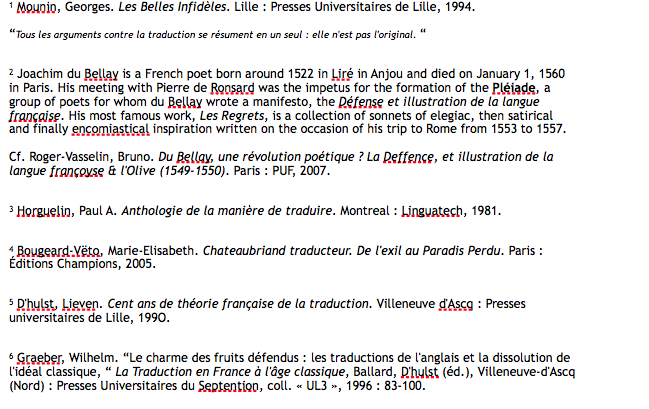
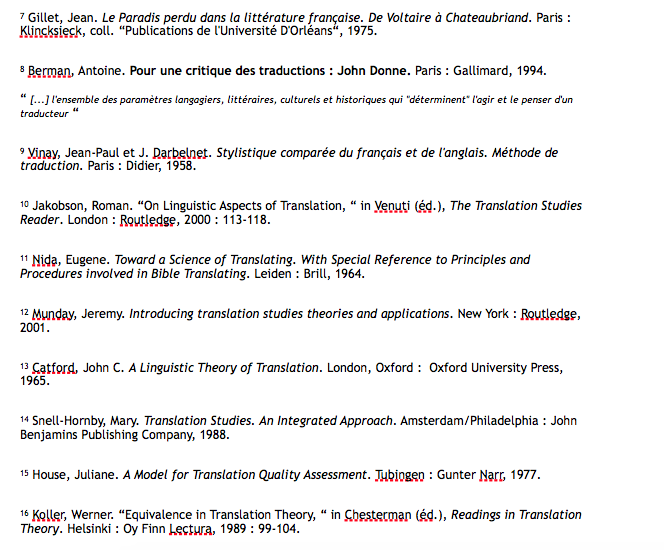
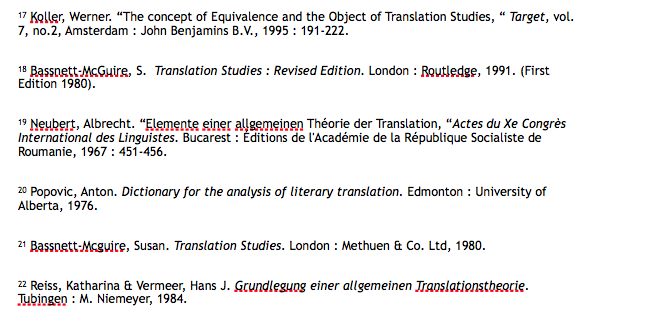
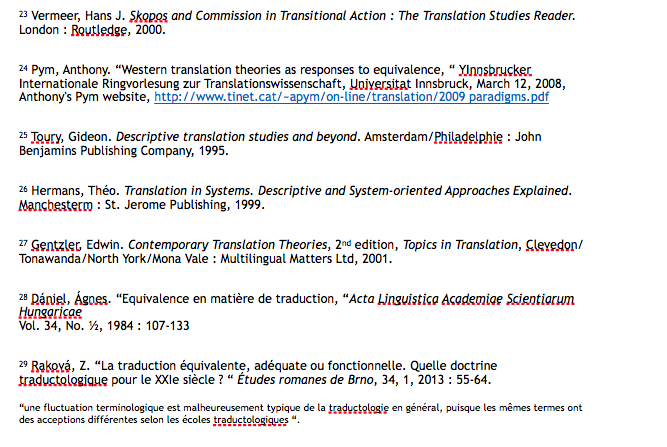
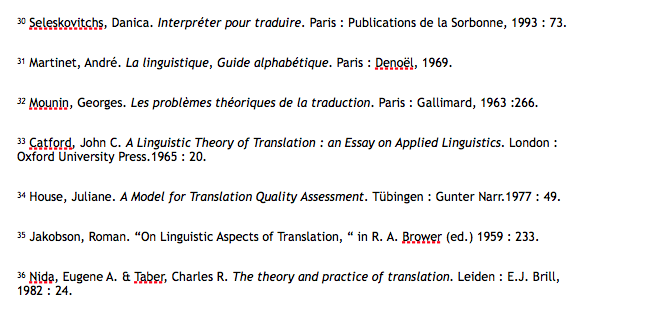
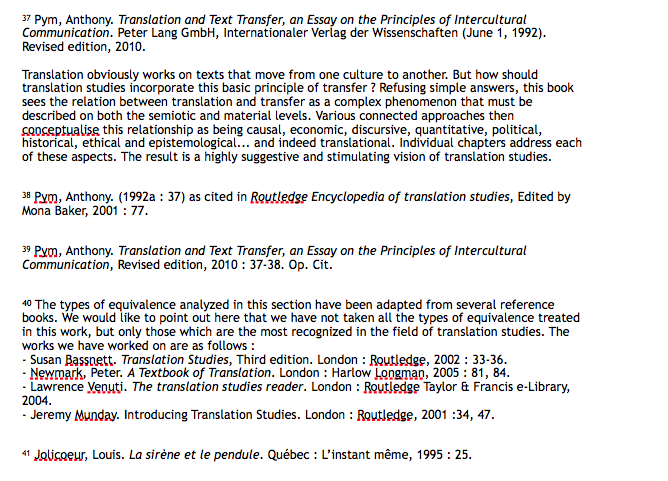
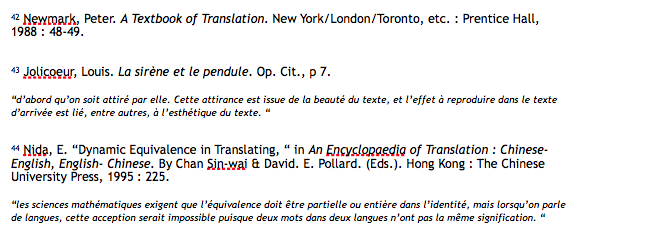
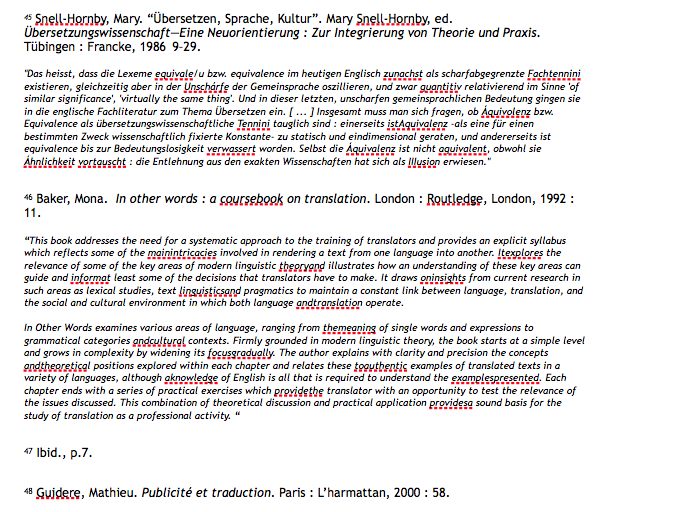
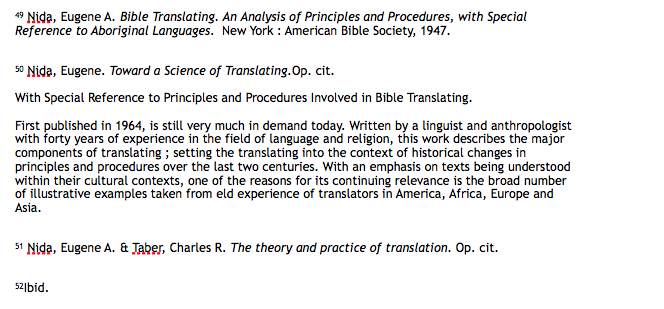
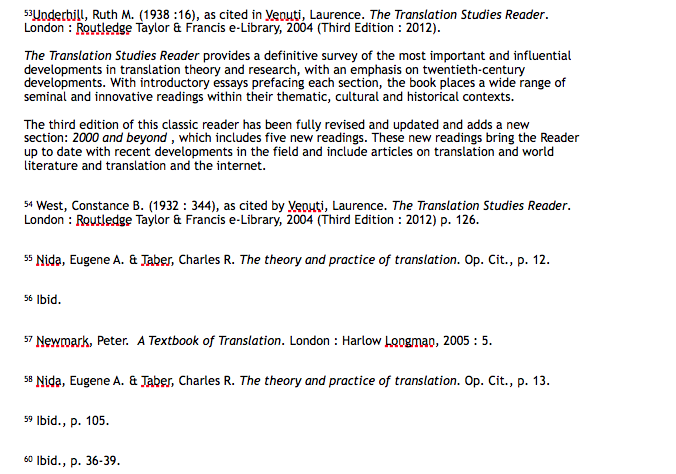
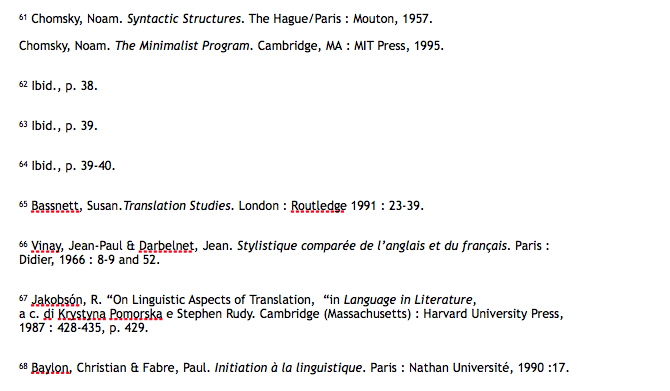

Dr. Chtatou has written another excellent paper. I would like to make his research on translation studies better known in the USA and the Spanish speaking world. If interested, please contact me.
Thank you so much Jose Valera-Ibara for your comment, please contact me at my email address. All the best.